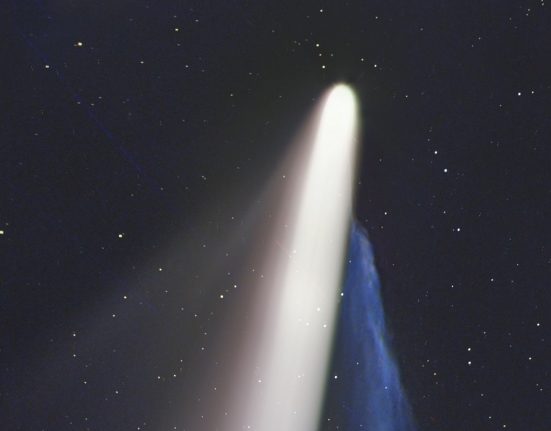Took NASA's New Horizons spacecraft almost a decade to reach Pluto and its moon, Charon, and did not stay long before move away towards the outer solar system. Scientists at the Southwest Research Institute (SwRI) had some pressing questions about Charon, and fortunately, they didn't have to wait another 10 years for answers. He James Webb Space Telescope has successfully detected both carbon dioxide and hydrogen peroxide on the Moon, adding to what we know about its unusual composition.
Charon is an important object for planetary scientists. It is the only medium-sized Kuiper Belt object that has been completely mapped, which is true thanks to New Horizons' brief flyby of Pluto and Charon in 2015. Unlike most Kuiper Belt objects in this range in size, Charon's surface is not obscured by volatile ices such as methane. Therefore, it provides astronomers with the opportunity to study its chemical signature.
In 2022 and 2023, scientists led by SwRI's Silvia Protopapa made four observations of Charon using the Webb Near-Infrared Spectrograph (NIRSpec). The different views allowed the team to thoroughly scan Charon's northern hemisphere. “Webb's advanced observation capabilities allowed our team to explore light scattered from Charon's surface at longer wavelengths than previously possible, expanding our understanding of the complexity of this fascinating object.” saying Study co-author Ian Wong of the Space Telescope Science Institute.
Analysis of infrared signals Charon reveals the presence of carbon dioxide. Comparing the data with laboratory measurements and models, the team concluded that carbon dioxide exists on Charon primarily as a thin layer above water ice-rich subsurface features. It may have been buried in the past, but impacts over eons have uncovered it. This matches the team's predictions: Pluto and Charon formed from a part of the Sun. protoplanetary disk where carbon dioxide would have been present.

Credit: NASA
The data also reveals high levels of hydrogen peroxide and, again, this is related to the presence of water ice on Charon. In this case, the team believes that the solar wind and cosmic radiation are responsible for the creation of this compound, which was not part of the moon's original composition. As these energetic particles bombard the exposed water ice, the molecules break down into hydrogen peroxide. Experiments at SwRI showed that this can occur even when carbon dioxide and water ice are mixed, as is the case at Charon.
The team was relatively confident that they would be able to detect carbon dioxide, but the detection of hydrogen peroxide was a surprise. This bodes well for future analyzes of distant objects with the Webb telescope. It may have been necessary almost 20 years build, but Webb is quickly recouping the investment.













Leave feedback about this